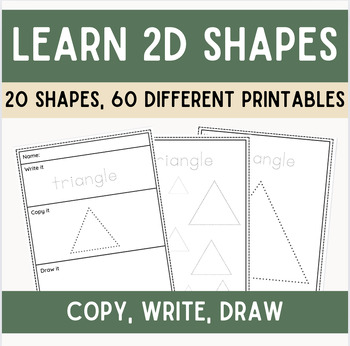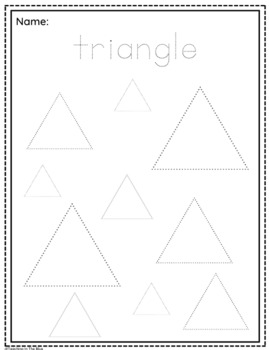2D Shapes | 60 Different worksheets | Geometry | Elementary | Write Copy Draw
- PDF
Description
20 Different 2D shapes to learn for Geometry!
This is a no prep resource, perfect for copying shapes, writing the names and then drawing them! A great way to introduce your students to a wide variety of shapes. Helps with fine motor skills and concentration too!
Use them as worksheets, print and laminate them to be used over and over again in your Math centre, send home for homework, use for scissor skills - the list is endless!
20 shapes - 60 worksheets - 3 activities per shape
20 Shapes included - triangle, circle, square, rectangle, diamond, star, pentagon, hexagon, heart, oval, octagon, cross, heptagon, nonagon, parallelogram, rhombus, crescent, kite, arrow, trapezoid
What's included?
- Big Shapes - every shape has a page with the shape enlarged to practice tracing over
- Multiple Shapes - every shape has a page with multiple sizes to practise tracing over
- Write, Copy, Draw - every shape has a page to write the shape, copy over it then have a go at doing it themselves
----------------------------------------------------------------------------------------------------------------------------
Don't forget to leave feedback and earn tpt credits to spend!





